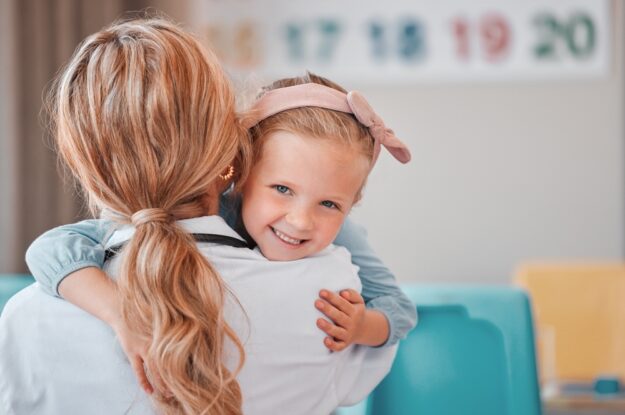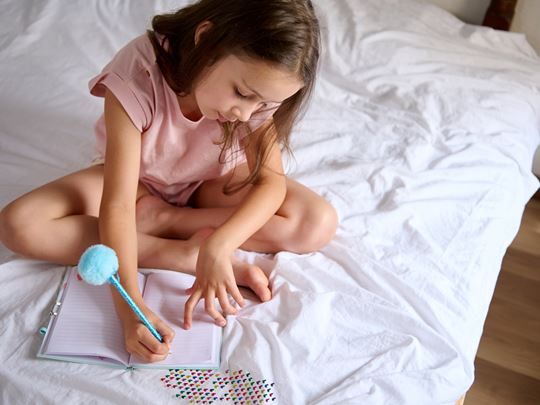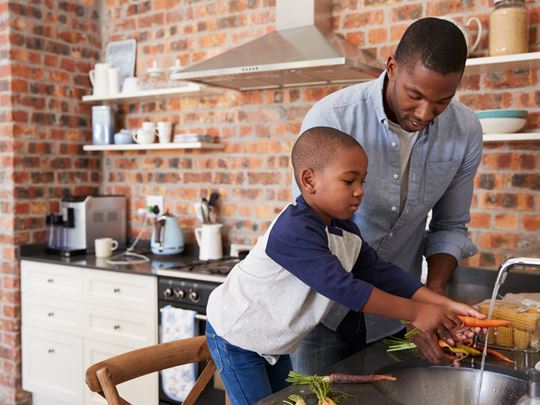Helping Your Young Person Deal with Stress
Stress is an inevitable part of life, but how we respond to it can make the biggest difference in how we feel. As an adult, you may have some coping strategies that you rely on when stress comes your way. However, for children and young people in care who have often already experienced a lifetime of stress in their early years, it can feel too difficult to manage.
From studying for exams and planning for the future to dealing with bullying and peer pressure, teenagers are faced with stressful situations every day. But, as a foster parent, with you by their side, they can find new healthy ways to deal with stress and build stress resilience that can help them both now and when they transition to independent living.
If you’re unsure where to start, join us as we explore the causes and signs of stress in children and young people, along with practical tips to help you support them.

Causes of stress in young people
It’s no secret that when children reach puberty, they face lots of physical and emotional changes. They also enter a period of their life where they become more independent and begin discovering who they really are.
Although this can be an exciting time for young people, it can also trigger stress. Here are some causes of stress that teenagers can encounter on a day-to-day basis:
- Transitioning to secondary school: Where they have to adapt to a new school environment, meet new people, and say goodbye to friends who are transitioning to a different school.
- Homework: As young people progress through the school years, their homework will increase, adding pressure and eating into their spare time.
- Exams: There is a lot of pressure on young people to achieve the best possible grades so they can continue studying at a higher level or secure an apprenticeship.
- Bullying: If your young person experiences bullying, it can raise their stress levels, as can worrying about the situation or having to adapt their behaviour to avoid bullies.
- Social media: The online world can add pressure to conform, encourage young people to participate in risky challenges, and leave them vulnerable to harmful content and cyberbullying.
- Body image: As their bodies change, teenagers can become preoccupied with their body image, comparing themselves to others.
- Peer pressure: Everyone wants to feel like they belong, especially teenagers, and this need to ‘fit in’ means they could face peer pressure to drink alcohol, vape, or get involved in other risky behaviours.
- Managing relationships: Whether they be romantic or platonic, relationships can be tricky to navigate during the teenage years.
- Planning for the future: Deciding what to do after leaving school can be incredibly overwhelming for young people.
For children in care, stress can also amplify their trauma. This means stressful situations could trigger painful memories or a trauma response, making average teenage pressures too overwhelming for them.
Take moving schools, for example; this can be difficult for any child, but for young people living with trauma, it can feel a lot more challenging. It means meeting new people they struggle to trust, being in a place where every sight and sound could be a threat, and having to focus when they find it difficult to sit still.
Every child and young person responds differently to stress, but below we explore the most common signs to look out for, so you can support them through it.
10 signs of stress in children
- Eating habits: You may see a reduction or increase in their appetite.
- Sleep: Maybe you can see their light on at 1 am, moving around before dawn, or struggle to get them up for school in the morning.
- Physical symptoms: They may complain of headaches, stomach aches, or bite their nails and skin.
- Frequent illness: Stress can impact the immune system, so if you’ve noticed your young person catching a lot of colds, stress could be the cause.
- Mood changes: They may seem irritable, sad, or quickly swing from one mood to another.
- Changes in motivation: They may lack motivation to participate in activities they usually enjoy.
- Social isolation: They may withdraw, cancelling plans with friends or choosing to spend time in their room rather than with the family.
- Behavioural changes: They may find it difficult to talk about how they’re feeling, communicating their emotions through changes in their behaviour.
- School refusal: They may flatly refuse to go to school or leave school early without your knowledge.
- Risky behaviours: If they’re finding it difficult to cope, they may use risky behaviours to numb their feelings, such as vaping, smoking or drinking alcohol.
When you foster a teenager, due to their trauma, they may already experience some of these signs of stress. The key is to understand what’s typical for them. This way, you’ll be able to identify changes that could indicate a rising issue, helping you support them in the right way.

Tips for easing stress in children and teenagers
Unfortunately, you can’t eliminate stress from your young person’s life. However, there are a few steps you can take to support them.

Review their routine
Routines support a sense of stability. However, if, over time, your young person’s schedule has become unbalanced, unrealistic or no longer reflects their current life stresses, it may be worth reviewing.
For instance, if you notice that your young person is struggling to sleep, you could speak with them about making some adjustments to their nighttime routine.
If watching TV or scrolling on their phone is currently a nightly ritual, you could suggest a screen-free activity instead, such as having a warm bath or reading a book. The blue light emitted from screens can impact melatonin production, a hormone essential for a good night’s sleep. Switching off screens at least one hour before bedtime could make a huge difference.
Another way to help could be by reducing their overall schedule load. If they’re enrolled in various extracurricular activities and have a calendar full to the brim for the next few weeks, adjusting their schedule to give them more downtime could help alleviate the pressure and improve their well-being.
Try children’s stress relief toys
There have probably been times when you’ve felt anxious or stressed and found yourself biting your nails, shaking your leg, or picking at your skin without even realising it. These small actions are actually ways of self-regulating your nervous system, but if used frequently, they can become unhelpful or unhealthy over time.
If you notice your young person using similar self-soothing behaviours, it may be worth introducing them to stress relief or fidget toys. This 12-sided mega fidget toy can be held in one hand to keep fingers busy, and squeezing a stress ball can help relieve tension.
Another great option is fidget rings. They’re stylish, discreet, and always within reach, allowing teenagers to self-regulate without worrying about what their peers may think.
Exercise the stress away
Stress can trigger our fight-or-flight response, a survival mechanism that prepares our bodies to either confront or escape an imminent threat. As a result, our bodies release cortisol and adrenaline, which increase our heart rate, breathing, and muscle tension.
However, the stresses we face on a day-to-day basis aren’t usually a real danger. This means we can end up holding the tension and energy released to face a threat inside our bodies instead.
Exercise is a fantastic way for teenagers to release built-up tension and satisfy the need to move when stress triggers a fight-or-flight response. It reduces cortisol and adrenaline while also releasing happy hormones, endorphins and serotonin, helping young people feel calmer and more in control.
Mindfulness activities
Stress can make it difficult to focus on the here and now because it often completely consumes the mind. This can make it more difficult for young people to concentrate in lessons or when completing homework and other tasks.
Mindfulness activities can be a great tool to help overwhelmed teenagers feel more present and in control. Activities can be as simple as colouring or walking in the park while concentrating on what they can hear, smell, and see.
Yoga and meditation are other great options because they will encourage your teenager to focus on their breathing, supporting a sense of calm. As a foster parent at FCA, you also have access to The Exchange, where you can find guided meditations, stretching exercises, and advice to help you and your family care for your mental health.
Spend quality time together
For a child or teenager who’s feeling stressed and overwhelmed, spending quality time with loved ones can make a real difference. Sometimes the best medicine is just being with people who truly understand who you are and what you’re going through.
Whether it’s cooking, watching movies, or playing board games, participating in a joint activity, while chatting and laughing together can do the world of good. It will also give them a chance to share their thoughts and feelings in a low-pressure way, which can help reduce their mental load and allow you to provide the support they need.
Supporting foster families
At FCA, we recognise the impact stress can have on children in care and the families who care for them.
That’s why our support for children in foster care includes support groups where they can share their experiences with those who truly understand where they’re coming from. We also have a calendar full of activities and events where young people can let off steam, build relationships and have fun – all great stress relievers.
We believe in therapeutic foster care, which means truly seeing things from each young person’s perspective and tailoring support to meet their individual needs. This includes having a network of support available from therapists, educational specialists, social workers, and support workers to care for their entire well-being.
When you foster with us, you’ll also enrol on our training programme, which will equip you with the knowledge and tools to care for children living with trauma. From understanding and managing challenging behaviour in children to attachment, first aid and safeguarding, you’ll feel confident at every stage of your fostering journey.
Join our foster family today
Ready to take the first step towards becoming a foster parent? Enquire today! Call us on 0800 098 4148, or submit our online enquiry form and a member of our friendly team will be in touch.
You can also find out more about what it’s really like to be a foster parent by reading our latest fostering stories or by checking out our library of blogs that cover every aspect of foster parent life.



















